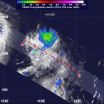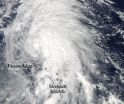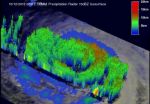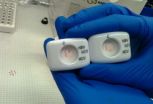(Press-News.org) NEW ORLEANS — Research released today demonstrates how new scientific knowledge is driving innovative treatments for spinal cord injuries. Spinal cord damage is debilitating and life-altering, limiting or preventing movement and feeling for millions worldwide, and leading to chronic health conditions and pain. The new studies suggest potential therapies for managing the aftermath of pain and pressure sores, repairing nervous system damage, and speeding recovery. The findings were presented at Neuroscience 2012, the annual meeting of the Society for Neuroscience and the world's largest source of emerging news about brain science and health.
In the United States, approximately 12,000 people are hospitalized for spinal cord injury (SCI) each year, and at least 270,000 people live with it. The initial injury is usually compounded by a wave of immune activity that can extend the initial nervous system damage, and complications of SCI may include pain and pressure sores that compromise the quality of life. New research is tackling all of these dimensions of SCI.
Today's new findings show that:
Nervous system tracts that are left intact but nonfunctioning following SCI appear to be reactivated through deep brain stimulation, speeding recovery of walking in a rodent model (Brian Noga, PhD, abstract 678.12, see attached summary).
Painful and sometime life-threatening pressure sores due to immobilizing nervous system injuries may be prevented by underwear wired to deliver tiny electrical currents that contract the paralyzed buttocks muscles, mimicking the natural fidgeting of able-bodied people (Sean Dukelow, MD, PhD, abstract 475.09, see attached summary).
Carbon monoxide's anti-inflammatory effects appear to accelerate healing in rats with spinal cord injury, possibly by altering the balance of immune cells and limiting the damage caused by molecules called free radicals (Yang Teng, MD, PhD, abstract 450.11, see attached summary).
Social contact appears to lessen the pain that follows peripheral nerve injury. A new mouse study correlates the healing social behavior with biochemicals in the brain and spinal cord (Adam Hinzey, abstract 786.04, see attached summary).
"While the damage of SCI can appear to be immediate and dramatic, the biological events that lead to extensive nerve and tissue damage are complex, and injuries evolve over time," said press conference moderator Jacqueline Bresnahan, PhD, of the University of California, San Francisco, an expert on nervous system trauma caused by spinal cord injuries. "Today researchers are finding ways to intervene in the cascade of molecular changes that follow SCI. From understanding immune cell responses to the healing power of social contact, researchers are finding new ways to treat and rehabilitate patients."
###
This research was supported by national funding agencies such as the National Institutes of Health, as well as private and philanthropic organizations.
Todd Bentsen, (202) 962-4086
Press Room, Oct. 13-17: (504) 670-4630
END
NEW ORLEANS — New animal studies provide additional support for investigating stem cell treatments for Parkinson's disease, head trauma, and dangerous heart problems that accompany spinal cord injury, according to research findings released today. The work, presented at Neuroscience 2012, the annual meeting of the Society for Neuroscience and the world's largest source of emerging news about brain science and health, shows scientists making progress toward using stem cell therapies to repair neurological damage.
The studies focused on using stem cells to produce neurons ...
(Garrison, NY) Personalized genomic medicine is hailed as a revolution that will empower patients to take control of their own health care, but it could end up taking control away from patients and limiting their treatment choices, concludes an article in the Hastings Center Report. A commentary responding to the article, by the editorial director of Health and Family at Consumer Reports, also appears in the journal.
Genomic science provides two categories of data, the authors write: pharmacogenomic information and genomic susceptibility information. Pharmacogenomic ...
Tropical Storm Maria was born in the western North Pacific Ocean and has a large area of moderate rainfall, as NASA's TRMM satellite revealed today, Oct. 15. NASA's TRMM satellite noticed that most of Maria's rainfall was occurring northeast of the storm's center. Maria is the twenty-third tropical cyclone of the western North Pacific season.
When NASA's Tropical Rainfall Measuring Mission (TRMM) satellite passed over Tropical Storm Maria on Oct. 15 at 1329 UTC (9:29 a.m. EDT) light to moderate rainfall was occurring northeast of the center and falling at a rate between ...
Tropical cyclones seem to love forming over weekends, Rafael formed over the weekend in the Atlantic, Anais in the Southern Indian Ocean and Hurricane Paul in the eastern Pacific Ocean. NASA's Terra satellite kept on top of Paul, however, and provided forecasters with a visible look at the newborn storm.
Paul formed on Oct. 13 at 5 p.m. EDT about 660 miles (1,065 km) south-southwest of the southern tip of Baja California, near 14.0 North and 113.6 West.
The Moderate Resolution Imaging Spectroradiometer (MODIS) instrument aboard NASA's Terra satellite captured a visible ...
While the Leeward Islands continue to get battered by Tropical Storm Rafael, a Tropical Storm Watch is posted for Bermuda as Rafael continues to move through the eastern Atlantic Ocean. NASA's Aqua satellite passed over Rafael on Oct. 14 and noticed the bulk of showers and thunderstorms were being pushed north and east of the storm's center.
The Moderate Resolution Imaging Spectroradiometer (MODIS) instrument aboard NASA's Aqua satellite captured a visible image of Tropical Storm Rafael in the Atlantic Ocean on Oct. 14, 2012 at 1720 UTC (1:20 p.m. EDT). The image clearly ...
Tropical Cyclone Anais, the first tropical cyclone of the Southern Indian Ocean's tropical cyclone season, has strengthened over the weekend of Oct. 13 and 14 and by Oct. 15, the storm was packing sustained winds near 100 knots (115 mph/185 kph).
The Moderate Resolution Imaging Spectroradiometer (MODIS) instrument aboard NASA's Aqua satellite captured a visible image of Tropical Cyclone Anais off Madagascar on Oct. 15 at 0940 UTC (5:40 a.m. EDT) and revealed an eye. Multi-spectral satellite imagery showed that convection has continued to decrease around Anais' ragged ...
Typhoon Prapiroon has been meandering in the western North Pacific Ocean over the weekend of Oct. 13 and 14, and NASA's TRMM satellite was able to identify where the strongest rainfall was occurring in the storm.
The Tropical Rainfall Measuring Mission (TRMM) satellite passed directly above weakening Typhoon Prapiroon in the western Pacific Ocean on October 12, 2012 at 0741 UTC (3:41 a.m. EDT). At that time, Typhoon Prapiroon was a powerful category two typhoon on the Saffir-Simpson scale with winds slightly less than 95 knots (~109 mph).
A 3-D image of the storm was ...
Montreal October 15, 2012 – Timely screening and diagnosis is critical to the success of new treatments and ultimately to the survival of hepatitis C patients. A new study led by the Research Institute of the McGill University Health Centre (RI MUHC) is the first to show that hepatitis C rapid and point of care tests with a quick turnaround time are highly accurate and reliable as conventional first-line laboratory tests. This head-to-head analysis, published in the current issue of the Annals of Internal Medicine, will lead to changes in screening practices and ultimately ...
The genomes of birds are riddled with DNA sequences from viruses, according to a study to be published on October 16 in mBio®, the online open-access journal of the American Society for Microbiology. Analysis of these viral sequences, known as endogenous retroviruses (ERVs), can provide insights into how both hosts and viruses have evolved over the eons.
"We examined the evolution of avian retroviruses on the basis of their fossil remnants in the three avian genomes that have been completely sequenced," write the authors from Johns Hopkins University and Uppsala University, ...
Researchers at Moffitt Cancer Center and colleagues at the University of South Florida; Duke University; Johns Hopkins University; the Brazilian National Cancer Institute; and the Rio de Janeiro Federal Institute of Education, Science and Technology have discovered that an intricate system to repair DNA damage called the "DNA damage response" (DDR) contains previously unknown components, including proteins that could be targeted as sensitizers for chemotherapy. Some of these targets may already have drugs available that have unrecognized uses in cancer therapy, said the ...





